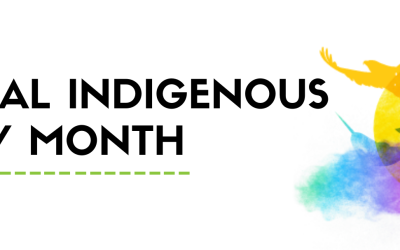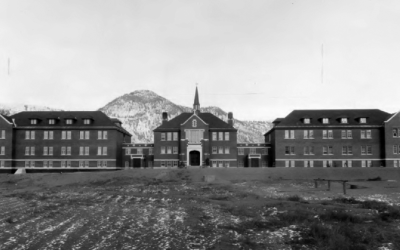
[Chief Miswagon began his presentation with some remarks and prayers in his own tongue.]
Good morning. I would like to thank the Frontier Centre for its invitation and Mr. Holle for his gift of tobacco. I acknowledge my relatives, the Nanayawin, and their ancestors for allowing me to be here in their traditional lands. I am please to see you here this morning—exercising your Treaty rights, including your Treaty right to be here and your Treaty right as Canadians to share this land.
I have been asked to speak this morning about Pimicikamak and its traditional government.
Pimicikamak is the name of my people. We are a people of rivers and lakes. The traditional territory of Pimicikamak is around Sipwesk Lake in the heart of the boreal forest, five hundred kilometres north of here. Flowing through our land is Kichi Sipi, the Great River that you call the Nelson River.
Pimicikamak’s traditional government is quite new, and yet it is also ancient. This may seem like a contradiction, but I will try to explain.
Pimicikamak Okimawin – our traditional government – is ancient because it existed as a government “of the people, for the people, and by the people” long before the United States of America created its Constitution. Our ancestors governed themselves in our territory since time immemorial. Pimicikamak did not have rulers. It had leaders. Leadership was based on consensus and especially upon respect that was earned.
Oral history tells us that, around the time of our people’s first real contact with the settlers, Tepastenam was the most respected leader of the Pimicikamak people. In the summer of 1875, he traveled to Norway House and invited the settlers to share our territory. According to our laws, he adopted them. To signify that, it is said, he made his mark on a document that came to be known as Treaty #5 and so did Lieutenant-Governor Morris on behalf of the Queen.
Subsequently, in common with other indigenous peoples, Pimicikamak’s government was suppressed. But it was not lost. You might say that it went underground. Our Elders kept it alive. Over the past fifteen years, Pimicikamak Okimawin has been reviving.
Of course, it is not just a matter of reviving the government of our ancestors from the 1800s. Traditional ways provide the framework; but we also need to catch up with more than a century of modern governance. That is why Pimicikamak Okimawin is also new.
You might wonder why we would base our modern government on traditions. The most important reason is because these traditions are part of who we are. They are central to our culture. They are integral to our identity as a people and our relationship to the land. They embody the wisdom of hundreds of generations of our forefathers. They are what is right for our people.
As it turns out, there is another reason for basing our modern government on our traditions.
Three years ago, researchers from Harvard University came to visit us in Cross Lake. They were from the Harvard Project on American Indian Economic Development. For many years, they have studied economic development among Indian tribes—mostly in the United States. They looked at what works and what doesn’t. They found three keys to sustainable economic development.
In a statement to the United States Senate, Professor Joseph P. Kalt, who headed this research, reported that the three requirements for sustainable economic success for American Indian tribes are:
- sovereignty,
- capable government institutions, and
- a match between the type of government a tribe has and that tribe’s cultural norms regarding legitimate political power. “I must stress,” he continued, “that it is a conclusion based on case after case.”
Sovereignty has become a confrontational word in Canada. Some may see it as a word that was taken over by Jacques Parizeau and the PQ. To them it means separation. Well, as Tepastenam showed, Pimicikamak is headed in a different direction. Let me tell you what sovereignty looks like for us.
We see sovereignty first as a matter of history. Sovereignty is simply a truth about who we are and where we came from. Our ancestors governed themselves. They answered to no earthly power. They made the sovereign choice to invite the settlers in and to become part of this country. But they did not extinguish themselves or their government.
The Creator put us in our homeland and gave us responsibility to govern ourselves and to care for the land. We take this spiritual responsibility very seriously. The land does not belong to us, we belong to the land. We have a duty to protect it. Without it, we would not exist.
Pimicikamak has a Constitution. Part of our Constitution is sacred law that comes from the Creator. We have our own system of governing ourselves. And, as the courts of Canada have always recognized, we have our own laws.
This is what sovereignty means for us:
- a Creator-given homeland,
- our own Constitution and laws, and
- and our own identity as a people within Canada.
We see sovereignty also as a matter of reconciliation. We seek to harmonize the way we administer our laws with the administration of other Canadian laws. This is about making thinks work on the ground.
The Harvard findings affirm that this form of sovereignty is also a key ingredient of sustainable economic activity among indigenous peoples.
Our Constitution and traditional laws are the basis for building capable government institutions—the second of the key requirements found by Harvard University.
When we began to re-assert our traditional government in the 1990s, we began a grassroots-based renewal of dignity. It was an exercise of self-determination by an entire people. Our people re-affirmed the leadership roles of our traditional governing institutions—the Council of Elders and the Women’s Council. We grew an Executive Council that slowly became distinct from the Band Council, and we mandated a Youth Council.
This led to a Four Councils system. The Four Councils work by consensus. Consensus is one of our constitutional principles. We do not make decisions on a 50%-plus-one basis. Of course, it takes more time to talk things through to achieve consensus, but then our laws and our national policies are strong.
Indian Affairs has nothing to do with this. Our governance comes from the Creator and from the land and from the people. It does not fit anywhere within the Indian Act system.
Let me mention a practical example of how we are building effective government institutions. The Four Councils recently mandated a national policy on Financial Administration.
The national policy sets the highest possible standards and provides machinery for their enforcement, including a Financial Management Board and a Comptroller.
The national policy requires Pimicikamak’s financial resources to be managed in accordance with Generally Accepted Accounting Principles. The Band Council has since adopted a similar policy. Few people realize that Indian Affairs does not use Generally Accepted Accounting Principles.
Another practical example is the involvement of women. The Women’s Council has veto power over all Pimicikamak laws. Women also participate in each of the three other councils. Overall, about half of the elected members of the Four Councils are women. Few governments in North America can say the same.
Another practical example of effective governing institutions is our election process. The Women’s Council supervises Executive Council elections. These elections are governed by our Pimicikamak Election Law.
Among other reforms, this Law abolishes residence requirements for electors—the Supreme Court of Canada later did the same for Band Council elections. It makes nomination a serious matter. It provides a term of office up to five years. It establishes serious fiduciary responsibilities for elected officials.
One result is that we get 70 to 80% voter participation. Again, few governments in North America can say the same.
I don’t want to give you the impression that all this works perfectly. It doesn’t, and maybe it never will. We certainly still have a lot of work to do. But in 15 years we have reshaped and reformed our government institutions. They are starting to be effective in today’s environment. We must learn to make them work even better.
The third key element from the Harvard study of sustainable economic development is legitimate government.
Indian Bands and Band governments lack legitimacy. It is not really their fault. The Indian Act creates the Bands and imposes a foreign governance structure on them. It doesn’t work for Indian peoples and it doesn’t work for Canada. It perpetuates third-world poverty and it lends itself to corruption.
Any imposed system is pretty much a worst-case scenario from the standpoint of the Harvard findings. It is a recipe for perpetual economic dependence.
As I have explained, our laws do not derive from any outside authority. This is called inherent jurisdiction. For the Pimicikamak people, inherent jurisdiction is the foundation for legitimate government.
We need a foundation that can bring our people together and engage us all in addressing the opportunities and the problems that we face together. You cannot hope to bring people together within a governance system that is imposed by an external authority, and especially a colonial external authority.
Such a system will never be accepted as legitimate. Former Indian Affairs Minister Bob Nault, with his well-meaning but ill-fated effort to fix the Indian Act, did not understand this. Many aboriginal citizens will see any amendment of the Indian Act by Parliament as illegitimate.
I believe that efforts to negotiate governance with band and federal officials in smoke-filled Winnipeg meetings are also doomed to fail.
Our experience suggests that, to be seen by a people as legitimate, self-government should come from the people, not from politicians and certainly not from other governments.
Pimicikamak has begun to dismantle the existing Indian Act system of governance without touching it. We are replacing it at our own pace, in our own way, with something that works for us. We are replacing it with something that will also work better for society as a whole. The changes we are making put us in line with the Harvard formula for sustainable economic development.
Indigenous peoples of Canada do not need tune-ups. They need fundamental change in a system that is fundamentally broken. They need new ideas. And when they are talking about their own government, maybe the ideas should be their own ideas for a change.
I should mention that the work of the Harvard University project on American Indian Economic Development is discussed on the Frontier Centre’s website.
Thank you! Ekosani!



